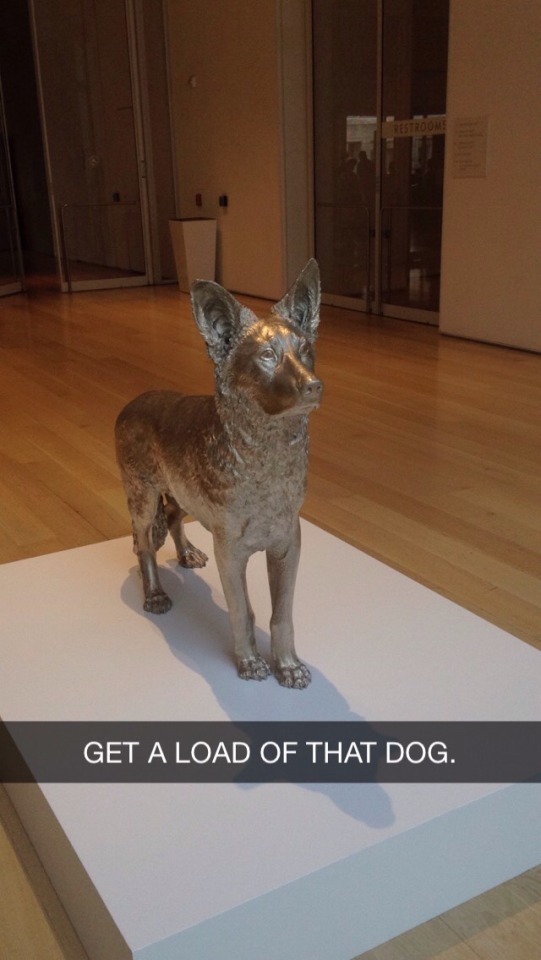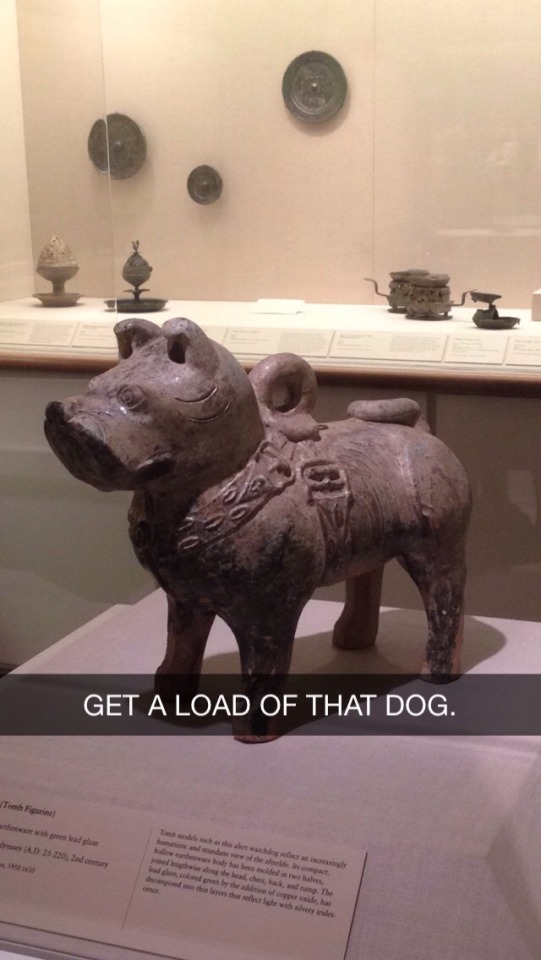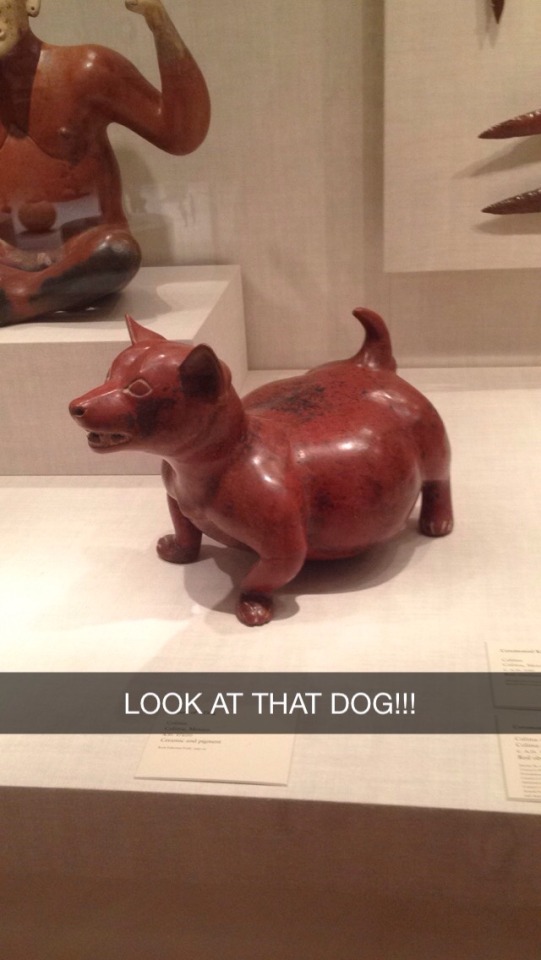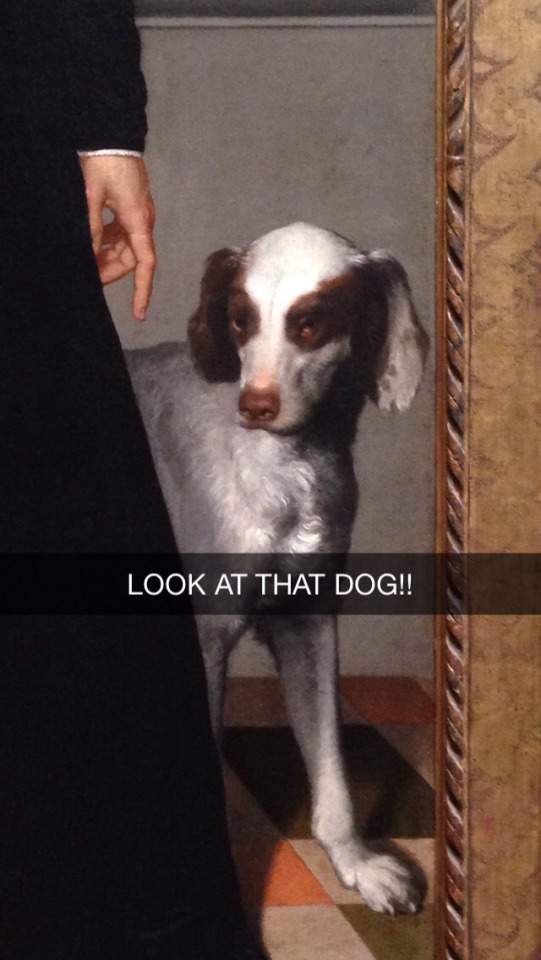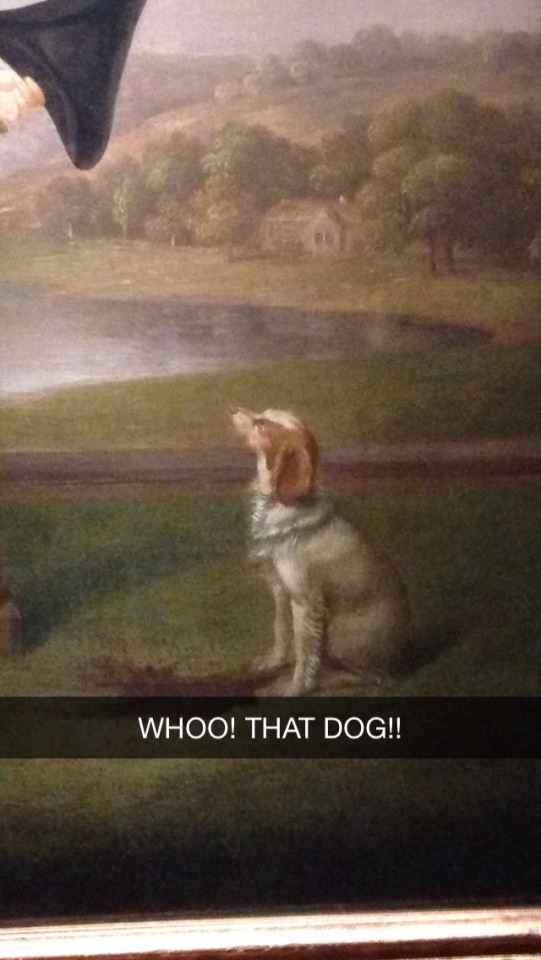The Mistakes You’ve Made Do Not Invalidate Everything You Say/do/achieve For The Rest Of Your Life.
The mistakes you’ve made do not invalidate everything you say/do/achieve for the rest of your life.
(via michael-julian)
More Posts from Theidlerhour and Others
shoutout to everyone working towards a goal
u have the potential to accomplish anything
focus @ what u can finish in [next] 24 hours
always remember to make urself proud
good luck at whatever u want to achieve !!

Fortune magazine cover designed by Arthur Lidov, depicting Maxwell’s thermodynamic surface of an “imaginary substance” similar to (though not quite) water based on J. W. Gibbs’s work, alongside Gibbs’s formula for the phase rule, bottom left
To describe a closed, homogeneous system — that is one of constant composition, such as an ideal gas — we need two parameters of state (e.g. T and p). For a heterogeneous system in equilibrium, consisting of one component (e.g. water) and two phases (e.g. liquid and vapour), we require only one parameter of state (e.g. T).
This can be expressed with Gibbs’s phase rule, which specifically describes the number of possible degrees of freedom (or variance) of a chemical system (where C = number of components, P = number of phases in the system): F = C ‒ P + 2
The number 2 is specified because this formulation assumes both T and p can be varied.

The thermodynamic surface for a typical substance is shown in this diagram, with the x axis (width) indicating volume, y axis (height) indicating pressure and z axis (depth) indicating temperature.
Water is thermodynamically atypical, as is readily observed from icebergs that float on liquid water — this can be seen by comparing this diagram to the illustration above, after Maxwell’s 1874 sculpture (itself based on Gibbs’s papers). Maxwell used coordinates of volume (x), entropy (y) and energy (z) — plotted from surrogate measures of pressure and temperature.
Maxwell stated that this model allowed “the principal features of known substances [to] be represented on a convenient scale”.
The construction of this was far more interesting than that of any automatist dream painting (though here the cover art is clearly trying to conjure up the surrealist landscapes of Magritte and contemporaries)
The numerical data about entropy can only be obtained by integration from data which are for most bodies very insufficient, and besides it would require a very unwieldy model to get all the features, say of CO2, well represented, so I made no attempt at accuracy, but modelled a fictitious substance, in which the volume is greater when solid than when liquid; and in which, as in water, the saturated vapour becomes superheated by compression. When I had at last got a plaster cast I drew on it lines of equal pressure and temperature, so as to get a rough motion of their forms. This I did by placing the model in sunlight, and tracing the curve when the rays just grazed the surface…

A superb summary of the two scientists’ graphical methods was put together by Ron Kriz at Virginia Tech (view full size image here). The melée of multi-coloured lines is a bit perplexing, and bringing a physical sculpture in to demonstrate the concept — stepping away from the 2D triple point plots still used in undergraduate lectures today — was a stroke of genius in a time long before the advent of sophisticated computer visualisations.
This general graphic method was not just to plot existing thermodynamic data, but rather to envision total derivatives — related to the work on vector calculus Gibbs was renowned for (his lectures on the subject were collected at the start of the 20th century to form an influential textbook).
Dr Kriz feels this object should provoke reflection on how we consider visualisation methods in science:
The development of the thermodynamic theory of state is a rare but excellent example that demonstrates how scientists combine analytic and graphical methods together with how they understand science. How scientists combine analytical and graphical models into new knowledge exemplifies a cognitive processes that includes visual thinking or what Dr. Daniel Coy describes as “geometric reasoning”. This new knowledge was reported and documented by Gibbs as a graphical method, so that others could reproduce and build on that understanding. As the graphical method was being developed by Gibbs the intent was not to use graphics for presentation but rather to develop the theory. This is contrary to the popular belief that imaging in science is used for presentation which can at times be insightful.
After reading and studying Gibbs and Maxwell, perhaps the reader would agree that neither Gibbs nor Maxwell developed their graphical method for presentation, a metaphor, or as an intriguing anecdotal experience that could not be scientifically reproduced. Rather the graphical method was sufficiently developed and described by Gibbs to be inclusive with developing the thermodynamic theory of state, which was reproduced and further developed graphically by Maxwell. Recall in summary Gibbs states,
In the foregoing discussion, the equations which express the fundamental principles of thermodynamics in an analytical form have been assumed, and the aim has only been to show how the same relations may be expressed geometrically. It would, however, be easy, starting from the first and second laws of thermodynamics as usually enunciated, to arrive at the same results without the aid of analytical formulae, to arrive, for example, at the conception of energy, of entropy, of absolute temperature, in the construction of the diagram without the analytical definitions of these quantities, and to obtain the various properties of the diagram without the analytical expression of the thermodynamic properties which they involve.
This is not a subjective process, e.g. what visual tools were used, how were they used, or how were the tools designed. The integrity of Gibbs’ and Maxwell’s graphical method is a well established, scientific, objective, and a reproducible process that has nothing to do with the subjective use of tools. This graphical method is inclusive with the developement of the thermodynamic theory of state where Gibbs demonstrates that understanding this theory can be accomplished “...without the aid of analytic formulae”, e.g. his equation of state. In fact Gibbs thought his graphical method was so important that,
Such a course would have been better fitted to show the independence and sufficiency of a graphical method, but perhaps less suitable for an examination of the comparative advantages or disadvantages of different graphical methods.
Hopefully the independence and sufficiency of a graphical method, as proposed by Gibbs, was developed and demonstrated here by envisioning energy as a surface defined as a scalar function of two independent variables, e.g. entropy and volume, where the gradient of the scalar function are slopes tangent to this surface and equal to temperature and negative pressure, as defined in Figs. 5 and 8. However since neither this surface nor the gradient lines tangent to this surface are not associated with a specific set of physical properties, this general graphical method is indeed coextensive in its application.
Further reading:
◉ Ronald D. Kriz (2007) Thermodynamic Case Study: Gibbs’s Thermodynamic Graphical Method — Envisioning total derivatives of scalar functions with two independent variables as raised surfaces and tangent planes. Virginia Tech.
◉ Preface to Elementary principles in statistical mechanics. JW Gibbs, 1902 and full text transcribed at Wikisource
◉ Open University PHYS 7.3 (1996) Internal energy, heat and energy transfer. University of Reading◉ Desmond Fearnley-Sander (1979) Hermann Grassmann and the creation of linear algebra.
There is no branch of mathematics, however abstract, which may not some day be applied to phenomena of the real world.
Nikolai Lobachevsky (via curiosamathematica)
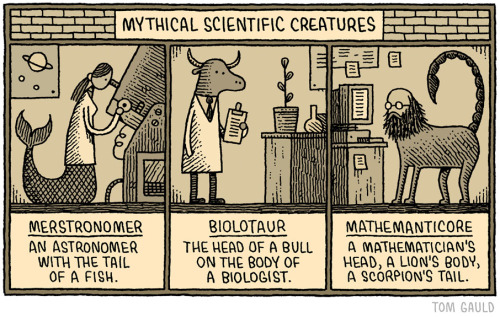
A recent cartoon for New Scientist.
Compassion hurts. When you feel connected to everything, you also feel responsible for everything. And you cannot turn away. Your destiny is bound with the destinies of others. You must either learn to carry the Universe or be crushed by it. You must grow strong enough to love the world, yet empty enough to sit down at the same table with its worst horrors.
Andrew Boyd, Daily Afflictions: The Agony of Being Connected to Everything in the Universe (via operationdeitas)
calculus gothic
-epsilon is negative. epsilon has always been negative. no matter how you struggle, epsilon will stay negative.
-you must write +C at the end of every communication with the entity feeding upon your work. you change your last name to +C, vainly praying that this will appease their ferocious appetite. It does not. +C
-dy/dx is a fraction. dy/dx isn’t a fraction. you can never know when it is. you can never know when it isn’t. it is always there. laughing. it owns a cat. a black cat. she sleeps in a box. plotting.
-there are parts everywhere. dismembered functions lying prone on cold white pages. you are told to integrate by them. everything only gets worse. more parts appear. then more. and more.

Willis A. Kropp, VIctor adding machine, 1942. Bakelite. USA. Via Cooper Hewitt
-
 tinyeldritchmonster reblogged this · 9 years ago
tinyeldritchmonster reblogged this · 9 years ago -
 theabscenseofartisart reblogged this · 9 years ago
theabscenseofartisart reblogged this · 9 years ago -
 goldengloriousitystudyblr-blog reblogged this · 9 years ago
goldengloriousitystudyblr-blog reblogged this · 9 years ago -
 conscious-state-of-mind reblogged this · 9 years ago
conscious-state-of-mind reblogged this · 9 years ago -
 missaimes liked this · 9 years ago
missaimes liked this · 9 years ago -
 sailor-girth reblogged this · 9 years ago
sailor-girth reblogged this · 9 years ago -
 samshighinthemountains reblogged this · 9 years ago
samshighinthemountains reblogged this · 9 years ago -
 ryleebop reblogged this · 9 years ago
ryleebop reblogged this · 9 years ago -
 princesslately liked this · 9 years ago
princesslately liked this · 9 years ago -
 lovepaulaaajo reblogged this · 9 years ago
lovepaulaaajo reblogged this · 9 years ago -
 trashydiva liked this · 9 years ago
trashydiva liked this · 9 years ago -
 emeraldeyedgirl reblogged this · 9 years ago
emeraldeyedgirl reblogged this · 9 years ago -
 vulgarxtmospheres reblogged this · 9 years ago
vulgarxtmospheres reblogged this · 9 years ago -
 chanel-bows-and-kitten-claws reblogged this · 9 years ago
chanel-bows-and-kitten-claws reblogged this · 9 years ago -
 hunyblood liked this · 9 years ago
hunyblood liked this · 9 years ago -
 appleemintt reblogged this · 9 years ago
appleemintt reblogged this · 9 years ago -
 garbagetrashdump reblogged this · 9 years ago
garbagetrashdump reblogged this · 9 years ago -
 garbagetrashdump liked this · 9 years ago
garbagetrashdump liked this · 9 years ago -
 radiolock reblogged this · 9 years ago
radiolock reblogged this · 9 years ago -
 wepon reblogged this · 9 years ago
wepon reblogged this · 9 years ago -
 theidlerhour reblogged this · 9 years ago
theidlerhour reblogged this · 9 years ago -
 gohomekiki liked this · 9 years ago
gohomekiki liked this · 9 years ago -
 theabscenseofartisart reblogged this · 9 years ago
theabscenseofartisart reblogged this · 9 years ago -
 jenthebug liked this · 9 years ago
jenthebug liked this · 9 years ago -
 chemysteriously-blog reblogged this · 9 years ago
chemysteriously-blog reblogged this · 9 years ago -
 drvagenius reblogged this · 9 years ago
drvagenius reblogged this · 9 years ago -
 digitalpurity liked this · 9 years ago
digitalpurity liked this · 9 years ago -
 jeremysebastian reblogged this · 9 years ago
jeremysebastian reblogged this · 9 years ago -
 jeremysebastian liked this · 9 years ago
jeremysebastian liked this · 9 years ago -
 zygodactylus reblogged this · 9 years ago
zygodactylus reblogged this · 9 years ago -
 wonderwomanliveshere reblogged this · 9 years ago
wonderwomanliveshere reblogged this · 9 years ago -
 offbynone liked this · 9 years ago
offbynone liked this · 9 years ago -
 crankybunny reblogged this · 9 years ago
crankybunny reblogged this · 9 years ago -
 moroseandstuff-blog reblogged this · 9 years ago
moroseandstuff-blog reblogged this · 9 years ago -
 h-brayy reblogged this · 9 years ago
h-brayy reblogged this · 9 years ago -
 megzilla013-blog liked this · 9 years ago
megzilla013-blog liked this · 9 years ago -
 realizethestrength liked this · 9 years ago
realizethestrength liked this · 9 years ago -
 clarethewanderer liked this · 9 years ago
clarethewanderer liked this · 9 years ago
"To awaken my spirit through hard work and dedicate my life to knowledge... What do you seek?"
229 posts
